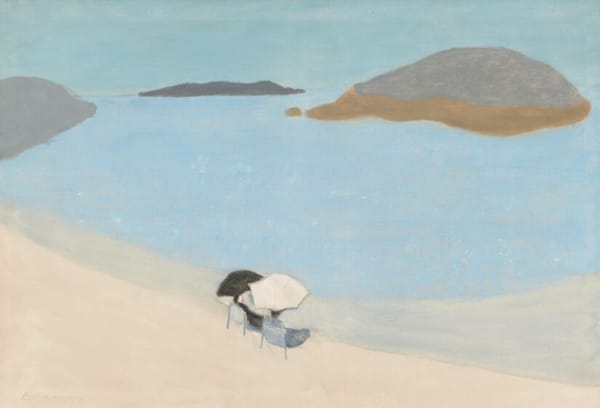Like many artists, Milton Avery was influenced by the time he spent painting during the summer, sometimes with other artists, sometimes in solitude.
Milton Avery
In the 1920s, Milton Avery lived and worked in New York, and began spending summers in Gloucester, Massachusetts. Avery was born in 1885, in the small upstate town of Sand Bank, New York. He spent much of his early adulthood caring for his extended family after the deaths of his father and brother-in-law. He was always interested in becoming an artist, but his priority was earning money to support the family.
He still managed to work, take classes and care for the family. It wasn’t until he was forty, during a summer in Gloucester, that he met and married artist, Sally Michel.
Sally supported the family, which eventually included their daughter, March Avery, who became as fine an artist as her parents.
The Avery’s New York apartment became a meeting place for artists like Marcel Duchamp, Wallace Putnam, Gershon Benjamin, Stuart Davis and for young artists like Adolph Gottlieb and Mark Rothko, for whom Avery became a mentor. The tranquility in Avery’s paintings comes, in part, from the frequent visits he made to Gloucester, observing the same beaches, the same scenes over the course of many years. Milton Avery ignored all the trends that came and went during his career, like Abstract Expressionism and Color Field, though he inspired the artists of those movements.
“I like to seize the one sharp instant in Nature,” he said, “to imprison it by means of ordered shapes and space relationships. To this end I eliminate and simplify, leaving apparently nothing but color and pattern. I am not seeking pure abstraction; rather, the purity and essence of the idea – expressed in its simplest form.” What Avery achieved was a style that used abstract shapes and lavish color to create works that captured both classic and modern sensibility.
In 1949, Avery suffered a massive heart attack. He continued to paint, but never fully recovered his health. A quiet, serene man, Avery’s influence on art in America was often overlooked in the 1950s. He suffered a second heart attack and died, in his sleep in 1965. There were more than 600 people at his funeral, where Mark Rothko spoke about Avery’s great artistic talent and his role as an anchor for young artists.
His works are in the permanent collections of many of the finest museums around the world.
Milton Avery’s Work at Surovek Gallery
Please contact us if you would like more information about Man and Sea or any of the other fine works at Surovek Gallery.




